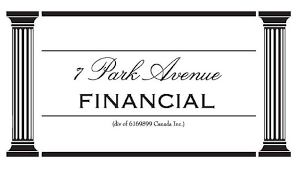|
Working Capital Solutions: The Flexible Financing Your Business Deserves
Working Capital Solutions That Keep Canadian Businesses Thriving
YOUR COMPANY IS LOOKING FOR A CANADIAN ASSET BASED LINE OF CREDIT!
SUPERCHARGE BUSINESS GROWTH - LET ABL REVOLUTIONIZE YOUR BUSINESS CREDIT LINE NEEDS
UPDATED 06/03/2025
You've arrived at the right address! Welcome to 7 Park Avenue Financial
Financing & Cash flow are the biggest issues facing businesses today
ARE YOU UNAWARE OR DISSATISFIED WITH YOUR CURRENT BUSINESS FINANCING OPTIONS?
CONTACT US
CALL NOW - DIRECT LINE - 416 319 5769 - Let's talk or arrange a meeting to discuss your needs
EMAIL - sprokop@7parkavenuefinancial.com

LEVERAGE BUSINESS ASSES - EMPOWER YOUR BUSINESS - THE ABL BUSINESS CREDIT LINE STRATEGY
Asset based lending in Canada is the closest thing to a ' generic ' business credit line facility in Canada. So why do we describe clients 'ABL solutions in that manner?
The answer is simply that it's a one-size-fits-all all solution to working capital and cash flow needs. It's generic that it's always, and we mean ' always,' about your business assets. That's why thousands of businesses choose asset based lending.
' ABL ' (Asset-based lending ) is a method of financing your business via a revolving line of credit. The company's assets, such as inventories, accounts receivable, and fixed assets, are combined into one facility as security interest collateral.
This gives the company flexibility around working capital needs, experiencing cash flow and/or growth challenges. Let's dig in!
When Cash Flow Gaps Threaten Your Business Survival
Your suppliers demand payment in 30 days, but customers take 60-90 days to pay invoices.
This timing mismatch creates dangerous cash flow gaps that force difficult decisions between paying rent, payroll, or purchasing inventory.
Let the 7 Park Avenue Financial team show you how working capital lines of credit eliminate these painful choices by providing immediate access to funds when your business needs them most, ensuring smooth operations regardless of payment timing.
A BUSINESS CREDIT LINE SOLUTION TO CONSIDER!
The proof in the pudding about ' ABL ' is that top finance experts tell us that asset-based lending gains traction every day - and again, generic if only for the reason that start-ups, small and medium-sized and large firms all can use this facility.
HOW DOES THE ABL CREDIT LINE WORK?
The asset-based financing method provides a business with a revolving business credit facility where the assets of the business are the collateral.
Typically, the assets include accounts receivable, inventories, fixed assets and even commercial real estate if owned by the company.
These facilities, unlike bank financing, don't focus on the cash flow of past business credit history; the focus is .. Assets!
In that way, the company can access via asset-based lenders, cash in times of fluctuating cash flows or other unique needs of the business.
If ABL credit lines are that generic, how do the business owner and financial manager find the right facility for their firm, and from whom does he or she find it?
Here it's all about what we call ' the tiers ‘. There are several types of lenders, and you have to know the size and quality of your transaction and who is best matched to finance it. Working with an expert in the area will, of course, help!
We're reminded of one of our mentors who once said ' tuition is costly in the school of experience. ‘When it comes down to a strategic financing decision, the cost of a bad experience can be expensive in many ways.
KEY DIFFERENCES BETWEEN ASSET BASED LOANS AND TRADITIONAL
ABL loans differ from traditional bank-type financing in focus on the collateral for the loan.
Bank financing will focus on personal guarantees, outside collateral, and business credit requirements around ratios on the balance sheet.
Abl focuses on sales and the tangible assets of the business, which allows companies with irregular cash flows or seasonality and cyclicality in their business to access funding.
While many types of bank loans require repayment schedules, the ABL revolver facility allows the business to draw on funds and pay for those funds only when required, allowing for better cash flow management and cash planning.
ELIGIBILITY CRITERIA FOR ABL ASSET BASED LOAN FINANCING
In order to qualify for ABL credit lines a business must meet certain criteria -
Typical criteria include the ability to produce proper financing statements and aged schedules of balance sheet items of eligible accounts receivable, inventory, and accounts payable.
The business should also be free from government liens and be up to date with provincial and federal taxes owed. Good balance sheet asset turnover will help approve an ABL line of credit, so firms focusing on DSO, inventory turns, etc, are strong candidates. An inventory appraisal might also be required.
WHY DO BUSINESSES GRAVITATE TOWARD ASSET FINANCE SOLUTIONS?
The answer is painfully simple - it's a challenging financing environment for companies searching for SME commercial finance.
Once owners and finance managers pick up on the fact that access to ABL provides liquidity and often makes a firm more financially competitive, it's easy to see why that road is better travelled.
WHAT ARE THE TYPES OF ASSETS UNDER ABL LOAN BUSINESS LOANS COLLATERAL?
Some confusion around ' ABL ' is that many business folks consider it as only an equipment financing solution -
However, in our context, it’s a business credit line that finances all your current and fixed assets - typically A/R, inventory, and equipment. Like bank credit lines, it's a ' senior facility 'and provides aggressive financing on those assets via eligible collateral.
Accounts receivable are a key form of ABL collateral - invoices under 90 days old are eligible for financing at advance rates in the 90% range.
Inventories can be in the form of raw materials, work in process, or finished goods, and each type of inventory will have an advance rate placed on borrowing power
Fixed assets used in the business and critical to business operations can be included in ABL credit lines, as well as commercial real estate if that applies to the transaction. Often, a real estate component might be under a short-term separate bridge loan.
More and more asset-based abl business lenders can include some form of financing around IP, patents, brands, and copyrights if that is applicable to a transaction.
It should be noted for very large transactions in the millions in the form of appraisal or field exam, might be required- although note this is for very large deals generally in the range of 10M plus.
The uniqueness of this business credit line is that those assets named above are financed under one revolving facility. The best ' deliverable ' for ABL is its ability to allow you to borrow aggressively on the real assets in your business, based on their ' real values. Bottom line = higher borrowing margins!
So, who's using and/or checking our ABL finance? Its companies can access any or enough bank financing for firms that can’t meet the ratio, covenant, and personal guarantee requirements typically mandated by the bank.
Bottom line? Investigate ABL business credit lines as a viable working capital option used by thousands of companies like yours, including your competitors. Opting for this solution will give you overall liquidity and cash flow that helps your business grow and succeed.
KEY BENEFITS OF ASSET-BASED LENDING ABL BUSINESS CREDIT LINE SOLUTIONS
Working capital access - short-term business needs can be met around cash flow/working capital
ABL facilities are custom-tailored via flexible credit structures and higher borrowing advances than traditional loans. Businesses access cash when needed
Asset-based credit facilities are known as covenant light - reporting requirements and eligibility criteria are significantly easier to manage around business operations and finance needs.
The reporting process revolves primarily around monthly borrowing base requirements around a/r and inventory, as well as a/p schedules.
KEY TAKEAWAYS - ABL FINANCING
All types of businesses can use asset-based lending to finance their business
Typical borrowers include manufacturers, distributors, retailers,
Businesses that are restructuring or focused on turnaround are perfect for an ABL solution
Companies using ABL financing face minimum reporting and little to no focus on the balance sheet and financial ratio covenants required by banks
ABL increases financing capacity and allows companies to be flexible in financial decision-making without third-party lender approval
CASE STUDY
A Canadian outdoor equipment retailer struggled with seasonal cash flow challenges. During summer months, they needed substantial inventory investment for the upcoming winter season, but peak sales didn't occur until late fall.
The Challenge: With $150,000 needed for winter inventory purchases in July, but peak revenue not arriving until November, the business faced a four-month cash flow gap that traditional financing couldn't address effectively.
The Solution: A $200,000 working capital line of credit provided flexible funding that aligned with their business cycle. They drew funds in July for inventory purchases, maintained operations through the slow period, and repaid the line during peak winter sales.
CONCLUSION - ASSET BASED LENDING ABL FINANCE
Asset-based finance solutions provide a unique and flexible form of financing for Canadian businesses requiring working capital.
Leveraging assets solves the business cash flow challenge and growth goals. Talk to the 7 Park Avenue Financial team to ensure you make an informed decision around this business financing method.
Asset-based financing is growing in popularity every day as a business financing solution for companies seeking flexible access to cash flow and working capital. The unique ABL business credit line options allow businesses that are leveraged and who might not be able to achieve traditional bank financing to secure the money the company requires for business needs.
Investigate ABL as a viable working capital option - work with an expert in the area. If you opt for this financing solution, your liquidity and overall cash flow should improve significantly!
Call 7 Park Avenue Financial, a trusted, credible and experienced Canadian business financing advisor to explore ‘generic ‘business credit line solutions to maximize borrowing capacity!
FAQ FREQUENTLY ASKED QUESTIONS PEOPLE ALSO ASK MORE INFORMATION
What types of assets can be used as collateral in asset-based lending (ABL)?
Asset-based lending uses a variety of business balance sheet assets as collateral - these include a/r, inventories fixed assets and real estate. Business lenders evaluate each asset category and construct a credit line that will provide liquidity to the borrower.
How does asset-based lending differ from traditional cash-flow lending regarding financial covenants and flexibility?
Unlike traditional cash flow lending that focuses on financial covenants and balance sheet and liquidity ratios around debt and debt service, ABL lending has few covenants and allows businesses to access liquidity based on sales growth and business assets. That financing provides flexibility to the business borrower to improve cash flow.
What limitations or risks are associated with asset-based lending (ABL) as a business credit line?
Businesses should ensure abl financing does not encourage overleveraging of the company - and they should be aware of monthly reporting requirements and the types of assets used as advances for the facility on a day-to-day basis.
What type of business can benefit from ABL Financing?
Businesses that can benefit from ABL financing solutions include manufacturers, distribution companies, and some types of service companies. Any business facing a cash flow challenge or requiring financing for larger orders around seasonality in their business can benefit from ABL business loan borrowing capacity, credit approval secured by assets.
What are the limitations of ABL Asset-based lending solutions?
Businesses should ensure that declines in sales or asset values and be a potential facility risk to future growth. As borrowing bases are reduced, the amount of credit availability declines on financial and physical assets around the company's cash flow. Companies with growing sales and good asset turnover present less risk to the ABL business loan lender. Not all business assets might be eligible for collateral financing, including highly specialized assets or inventories with no real resale value.
What types of businesses benefit most from working capital lines of credit?
Working capital lines of credit serve businesses across all industries, particularly those with seasonal revenue patterns, long payment cycles, or inventory-heavy operations. Retail stores preparing for holiday season, construction companies waiting for project completions, and service businesses managing contract timing gaps find these credit facilities essential for maintaining steady operations.
What interest rates should I expect for working capital financing?
Working capital line of credit rates vary significantly based on your business credit profile, typically ranging from prime plus 1% to prime plus 8% for established businesses. Newer companies or those with credit challenges may see higher rates, but the flexible payment structure often makes this financing more cost-effective than alternative funding sources.
Do I pay interest on unused portions of my credit line?
Working capital lines of credit charge interest only on funds actually drawn, not on your total approved credit limit. Many lenders also charge small monthly maintenance fees regardless of usage, but these typically range from $25-100 monthly, making unused credit lines very affordable to maintain.
What documentation do lenders require for working capital line approval?
Working capital line of credit applications require recent financial statements, bank statements, tax returns, and cash flow projections. Lenders particularly focus on your accounts receivable aging, inventory turnover, and historical revenue patterns to assess your repayment capacity and appropriate credit limits.
Where can Canadian businesses find working capital lines of credit?
Working capital financing is available through traditional banks, credit unions, alternative lenders, and specialized business finance companies throughout Canada. Each lender type offers different advantages, with banks providing lower rates but stricter requirements, while alternative lenders offer faster approvals with more flexible criteria for a revolving loan solution.
Why choose lines of revolving credit over term loans for working capital?
Working capital lines of credit are short term financing that provides payment flexibility that matches your revenue cycles, allowing you to borrow and repay based on actual cash flow rather than fixed monthly payments. This structure reduces financial stress during slow periods in your cash conversion cycle, while providing immediate access during growth opportunities. Additionally, your firm only pays interest on the outstanding balance.
How do working capital lines of credit improve cash flow management?
Working capital lines of credit provide immediate funding flexibility that smooths out revenue fluctuations and payment timing mismatches. Instead of waiting 30-90 days for customer payments while suppliers demand immediate payment, you can maintain steady operations and take advantage of early payment discounts that often exceed your borrowing costs.
What competitive advantages do working capital lines provide?
A Working capital loan or line of credit enables you to accept larger orders while managing cash flow , maintain adequate inventory levels, and offer competitive payment terms to customers without cash flow restrictions. This financial flexibility allows you to outbid competitors who are cash-constrained.
How do I choose the right working capital lender?
Working capital lender selection should consider interest rates, fees, credit limits, repayment flexibility, and approval speed based on your specific business needs. Compare offers from banks, credit unions, and alternative lenders while evaluating their industry experience and customer service quality to find the best fit.
What makes working capital lines of credit essential for business operations?
Working capital lines of credit address the fundamental challenge that all businesses face: the timing mismatch between when you must pay expenses and when customers pay you. This financing tool provides the bridge between these payment cycles, ensuring operational continuity and enabling strategic decision-making based on business merit rather than cash availability.
Citations / More Information
- Bank of Canada. (2024). "Small Business Credit Conditions Survey." https://www.bankofcanada.ca
- Business Development Bank of Canada. (2024). "Canadian Small Business Financing Report." https://www.bdc.ca
- Statistics Canada. (2024). "Business Financial Management Survey." https://www.statcan.gc.ca
- Canadian Federation of Independent Business. (2024). "Small Business Cash Flow Study." https://www.cfib-fcei.ca
- Innovation, Science and Economic Development Canada. (2024). "Small Business Financing Profile." https://www.ic.gc.ca

' Canadian Business Financing With The Intelligent Use Of Experience '
STAN PROKOP
7 Park Avenue Financial/Copyright/2025

ABOUT THE AUTHOR: Stan Prokop is the founder of 7 Park Avenue Financial and a recognized expert on Canadian Business Financing. Since 2004 Stan has helped hundreds of small, medium and large organizations achieve the financing they need to survive and grow. He has decades of credit and lending experience working for firms such as Hewlett Packard / Cable & Wireless / Ashland Oil
|